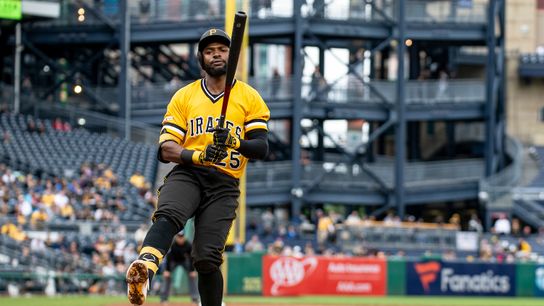STATE COLLEGE, Pa. -- I think it's safe to say that, if polled today, the majority of Pirates fans and observers alike would agree that Gregory Polanco might have come back from injuries to his shoulder and knee a bit too quickly.
On one hand, Polanco was incredibly driven in his quest to beat the original timetable for return laid upon him after that fateful, awkward slide last September. When a player works that hard, no one would want to deprive him of the opportunity to hit the field the second it was feasible for him to do so.
But here's the thing: Feasibility can often serve as the detriment to what's prudent. Namely, carrying an all-there Polanco for the majority of the season, rather than the loose assemblage of baseball parts that rarely work together at the same time.
What's done is done, and now the club must look toward getting the most out of Polanco for the rest of this star-crossed 2019 season.
How can that happen, exactly?
For one, manager Clint Hurdle did his part by pulling off one of his trademark moves in "unplugging" Polanco from a starting role for two of the last three contests, a trend that might continue with the team's crowded outfield. The rest of the onus will be placed at the feet of Polanco himself.
Luckily for him, there is a clear path to reclaiming some semblance of productivity. And the first step in that path lies in what is normally a comfort for any hitter: the strike zone. To be specific, hittable pitches in the strike zone.
Polanco is swinging more than ever at pitches in the zone, but the results haven't quite been there for him.
Digging deeper, one sees that Polanco's struggles against pitches in the zone -- fastballs in the zone in particular -- come from a variety of nebulous causes. Yet all roads lead back to timing. Polanco's timing has looked off this season despite momentary flashes where it seems back, most likely due to muscle memory. This could explain the 8.1 percent pop up rate on fastballs in the zone, up from 6.7 last season. It could serve as a disclaimer to explain away Polanco's career-high 29.8 percent swinging strike rate. Perhaps his poor timing can help us to comprehend how he has only made an overall in-zone contact rate of 76.5 percent, the lowest of his career and a few degrees worse than the 83 percent MLB-wide rate.
Pitchers are taking advantage of this issue in Polanco's timing to set him up to fail. Let's look at this recent plate appearance against Braves pitcher Sean Newcomb.
Here, Newcomb does a fantastic job of mixing and matching velocities and locations. First two pitches are fourseam-change, followed by change-fourseam. Along the way, velocity rises and falls while location ping pongs in and out.
I grabbed all of Polanco's pitches seen thus far in 2019. Of the fastballs that are part of a pitch pair -- i.e. two consecutive pitches within a singular plate appearance (so, this would not include first pitches that were put in play) -- wherein the other pitch is a breaking or offspeed pitch, Polanco is only putting up an xwOBA of .298. In 2018, that figure shot up above .300 for the first time in his career at a robust .375. Polanco is seeing more such pairs by percentage this season (34.5 percent) as opposed to last (29.9 percent).
For Polanco to serve as a productive bat for the rest of 2019 while he continues to heal, a better understanding of what his current weaknesses are -- and how pitchers are trying to exploit them -- could lead to an ability to compensate for his physical shortcomings.

